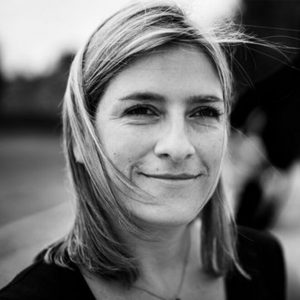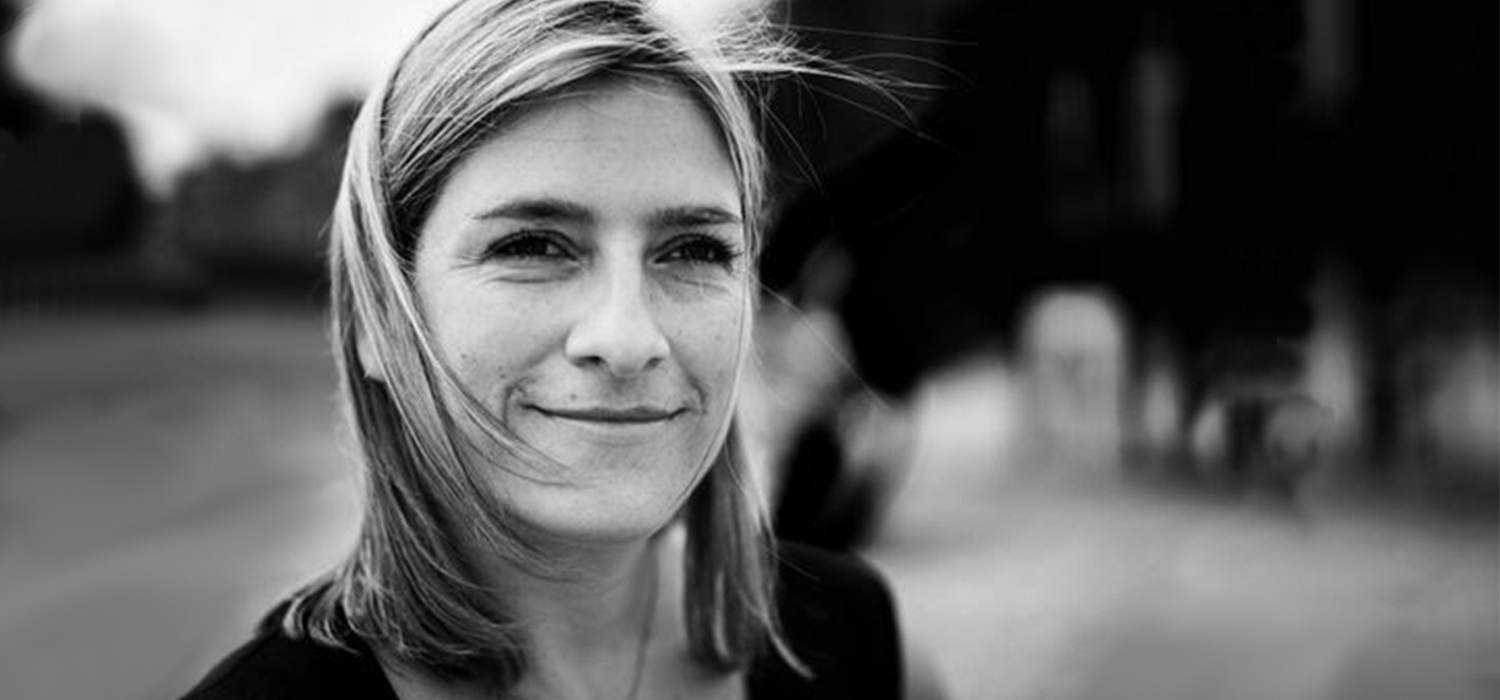Interview|Pauline Vermare
As part of this year’s Hariban Award 2021 program, we were grateful to have the chance to interview Juror Pauline Vermare, Curator and Cultural Director of Magnum Photos. Pauline Vermare shared with us her earliest memories, formative encounters and experiences that have shaped her approach and relationship to photography today
Could you share with us some of your earliest experiences with art, specifically photography? How did you come to photography/How did photography come to you?
I don’t ever want to lose the real memory of anyone again.”
— Nan Goldin
What are your thoughts on photography’s relationship to memory? Have they shaped your approach to your practice and if so how?
Who/what have been your biggest influences/mentors? How have they shaped the way you work?
You have previously worked at the Foundation Henri Cartier-Bresson, ICP and are now the Cultural Director at Magnum Photos, New York. Could you share with us some key experiences from your time at these spaces or independent work that influenced your work and approach to photography?
PV: Each and every photographer I have met as I was working in these institutions taught me something important, by the way they positioned themselves in the world and through the subjects they chose to focus on. At the Fondation HCB, I remember being deeply touched by Fazal Sheikh’s work and dedication to his subjects. At ICP, working for the Capa Archive with Cynthia Young, the “Mexican Suitcase” — the rediscovered negatives of the Spanish Civil War by Robert Capa, Chim and Gerda Taro — was one of the most inspiring projects I ever worked on. As for Magnum, it is arguably “the story of my life”: my father was an ardent admirer of Cartier-Bresson and of the collective at large. I met Agnès Sire — then the Cultural Director of Magnum Paris — by complete chance at my politics school, and she took me in as an intern, to be Diane Dufour’s assistant at the time. Starting there in 2001 was a dream I didn’t even know I had. That’s how it all started for me. Fifteen years later, I came back to Magnum as the CulturaI Director of the New York office, and to this day I take immense pride and pleasure in representing and working with such a diverse and engaged group of photographers. All in all, I would say that these experiences have pushed me to focus on the human dimension of photography: the men and women behind the camera.
Could you share with us your vision and thoughts of where you’d like to take Magnum Photos as its cultural director? The organisation also has many opportunities online and in person for those interested in developing their careers. Could you share with us why Magnum places a high emphasises on providing learning opportunities to photographers?
Could you share with us a current project that you are working on which we can look forward to experiencing?
The Hariban Award provides the opportunity for collaboration. What are your thoughts on collaborative processes and in this case with printmaking? Do you have any advice for artists thinking about entering the Hariban Award this year?
今年のハリバンアワード2021プログラムの一環として、審査員のポーリン・バーマーレにインタビューする機会を得られ大変感謝しています。マグナムフォトのキュレーター兼文化ディレクターであるポーリンは、写真との出会いや経験、初期の思い出、今日のメディアへのアプローチなどを私たちに語ってくれました。
アート、特に写真に初めて触れた頃の経験を教えてください。どのように写真との出会いはどんな感じだったのですか?
ポーリン・ヴェルメール: 私は幼少期のかなり早い段階で、父から写真に触れる機会を与えてもらいました。父が持っていたカメラや写真集、アパートの中で乾燥されていたネガ、さらにフランスのリヨンとその後の東京で「写真の狩り」をしていたことなど。そして9歳の時に、父から人生初のカメラを、小さなミノルタをもらいました。それから写真を撮り始めた私は、ほとんど写真に没頭して育ったと言えるでしょう…。その後、日本語を勉強するためにパリに引っ越し、当時のフランス国立写真センターや他の多くの会場で私にとって最初の写真展を見ることができました。パリは写真のためのとても特別な場所で、現在も依然としてそうです。ポール・ストランドの作品を初めて目にした時、とても感動させられたのを覚えています。ナン・ゴールディンの「Ballad of Sexual Dependency(性的依存のバラード)」のご本人の紹介テキストは、姉妹二人がまだ非常に若い時に妹を自殺で失ったことについて語っていますが、写真の衝動的な本質を象徴しているように、特に以下の文は私にとても重要な影響を与えてくれました。
「自分の歴史に関しては他人の見解の影響を受けたくありません。
もう二度と誰かに対しての本当の記憶を失いたくないのです」
—ナン・ゴールディン
写真と記憶の関係について、どのようにお考えですか?制作に取り組む際、その考え方はどのような影響を与えていますか?
最も影響を受けた人やメンターは誰ですか?また、彼らはあなたの仕事のやり方をどのように形成しましたか?
アンリ・カルティエ=ブレッソン財団、ICPを経て、現在はマグナム・フォト(ニューヨーク)の文化ディレクターを務めていますね。これらの場所や単独の仕事での経験から、仕事や写真へのアプローチに影響を与えた重要な思い出や経験を教えてください。
ポーリン・ヴェルメール: 私がこれらの機関で働いていた時に出会った写真家たちは、自分を世界でどのように位置づけ、どのような被写体を選んだかによって、私に重要なことを教えてくれました。HCB財団では、ファザル・シーク(Fazal Sheikh)の作品と彼の被写体への献身的な姿勢に深く感動したことを覚えています。ICPでは、シンシア・ヤングと共にキャパ・アーカイブのために働きましたが、なかでもロバート・キャパ、チム、ゲルダ・タローによってスペイン内戦で撮影され、その後再発見されたネガ「メキシカン・スーツケース」は、私がこれまでに手がけたプロジェクトの中で最も刺激的なものの一つでした。マグナムについては、父がカルティエ=ブレッソンとマグナム全体に傾倒していたので、間違いなく私の「人生の物語」です。当時マグナム・パリの文化ディレクターだったアニエス・シアーとは、政治を学ぶ学校で偶然に出会い、ダイアン・デュフールのアシスタントとしてインターンに迎えてくれたのです。2001年にマグナム・パリで働くことは、自分が持っていることすら知らなかった夢でした。そして、それがすべての始まりでした。それから15年後、私はニューヨーク・オフィスの文化ディレクターとしてマグナムに戻ってきました。今日に至るまで、このように多様で熱心な写真家たちを代表して一緒に仕事をすることに、大きな誇りと喜びを感じています。これらの経験から、私は写真においての人間的側面、つまりカメラの後ろにいる男性や女性に焦点を当てるようになったと言えるでしょう。
文化ディレクターとして、マグナム・フォトをどのような方向に導いていきたいか、ビジョンや考えを聞かせてください。また、マグナム・フォトでは、キャリアアップに興味がある人のために、オンラインや対面で多くの機会を提供しています。なぜマグナムがフォトグラファーに学習の機会を提供することに力をいれているのか、その理由を教えてください。
ポーリン・ヴェルメール: マグナム・フォトの文化部門は、展覧会、出版物、レガシー・プロジェクト、公開プログラムを通じて、写真家の作品と亡くなった写真家が残した作品を広めることを主な使命としています。マグナム・フォトの特有な財産は、1930年代から今日に至るまでの素晴らしいアーカイブです。私たちは、学者、学芸員、作家、科学者などの外部の声をどんどん取り入れて、新しい見解や、批判的な見解でアーカイブを調査してもらっています。 また、教育チームと連携し、あらゆる世代の写真家の視覚リテラシーとエンパワーメントを促進するために協力しています。これらはマグナム・フォトの中核を成す部門であり、私の同僚は近年、特にここ一年のコロナ禍の際には、マグナムの写真家に直接アクセスできるように、豊富なオンライン・コンテンツを提供するための多くの努力をしてきました。現在、私たちは「ビヨンド・マグナム」と題した無料のトークシリーズに取り組んでいます。このシリーズは6月中に開催され、ゲストを招いて、アーカイブ、表現、写真の未来などをテーマに、今日の写真界で起きている重要な問題を議論します。このシリーズに取り組むことは、困難であると同時に活力を与えてくれました。
現在取り組んでいるプロジェクトの中で、私たちが楽しみにできるものがあれば教えてください。
ポーリン・ヴェルメール: とてもわくわくするプロジェクトの一つが、6月に始まる上述のトークシリーズ「ビヨンド・マグナム」です。また、マグナムと並行して単独で他のプロジェクトにも取り組んでいます。例えば、2017年に東京のBunkamura ザ・ミュージアムでソール・ライターの回顧展を佐藤正子さんと一緒に企画しました。新しいプロジェクトは、以前フランス語での撰集『A History of Women Photographers(女性写真家史)』(マリー・ロベールとルース・ルバール編、Textuel社刊)に寄稿した日本の写真家に関するいくつかの記事がきっかけとなったもので、数ヶ月前にヨーロッパ写真美術館(Maison Européenne de la Photographie)から、日本の女性写真家に関するマスタークラスを教えるよう招待されました。研究している過程で、19世紀から今日に至るまで、日本には多くの偉大な女性写真家がいたにもかかわらず、有名な日本の写真家のほとんどが男性であることに気がつきました。今、私はこのテーマで本を作っていますが、とても楽しいです。出版は2022年を予定しています。
HARIBAN AWARDはコラボレーションの機会を提供しています。共同制作の過程について、そして今回のようなプリント作品の制作についてどうお考えですか?今年のHARIBAN AWARDに応募しようと考えている作家たちには何かアドバイスはありますか?
ポーリン・ヴェルメール: 私はいつも、写真家たちに賞への応募を勧めています。なぜならば、その分野のプロと作品を共有することは、非常に前向きで直接的な方法だからです。また、自分の願望や芸術的動機を明確にしたり、再定義したりする良い機会でもあります。 今回の場合では、異なる技術や独自の職人技によって、自分の作品が違って見えることを想像する、ユニークで美しい方法でもあります。それは、一生に一度のコラボレーションであり、自分の作品を創造的に探求することでもあります。HARIBAN AWARDは、美術作家にとって、境界を越えるように誘う特別な機会であり、創造性、開放性、そして想像力が問われます。過去にソール・ライター氏のポートフォリオを通じて、便利堂の工房の見事な職人技を目の当たりにした私は、出来上がるコロタイプが魅惑的なものになることを確信しています。


